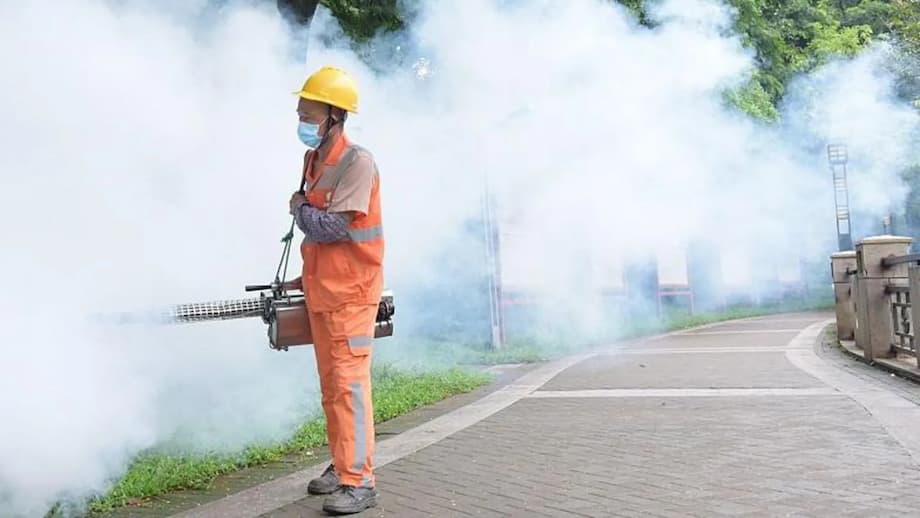China Faces Unprecedented Chikungunya Outbreak in Guangdong
China is confronting its largest-ever outbreak of chikungunya, a mosquito-borne viral disease, with more than 10,000 cases reported in Guangdong province since June 2025. The epicenter is the bustling city of Foshan, but the virus has now spread to at least 12 other cities, with isolated cases emerging in Hong Kong, Macau, Hunan, and even Taiwan. This sudden surge has triggered a sweeping public health response reminiscent of the country’s Covid-19 controls, raising both international concern and domestic debate over the necessity and intrusiveness of the measures.
- China Faces Unprecedented Chikungunya Outbreak in Guangdong
- What Is Chikungunya and Why Is It Spreading in China?
- Inside Guangdong’s Outbreak: Timeline and Spread
- China’s Response: From Drones to Elephant Mosquitoes
- International Response and Travel Advisories
- How Dangerous Is Chikungunya? Understanding the Risks
- Broader Implications: Climate Change, Urbanization, and Global Health
- What’s Next? Outlook and Lessons Learned
- In Summary
Chikungunya, while rarely fatal, is notorious for causing severe joint pain and fever, symptoms that can linger for months or even years in some patients. The outbreak’s rapid escalation in a region previously unaccustomed to the virus has exposed vulnerabilities in public health preparedness and highlighted the growing global threat posed by mosquito-borne diseases in an era of climate change and increased travel.
What Is Chikungunya and Why Is It Spreading in China?
Chikungunya is a viral disease transmitted to humans by the bites of infected Aedes mosquitoes, primarily Aedes aegypti and Aedes albopictus. The name comes from the Kimakonde language of Tanzania, where the virus was first identified in 1952, and means “that which bends up”—a reference to the stooped posture of sufferers due to intense joint pain.
Symptoms typically appear three to seven days after a bite and include:
- Sudden high fever
- Severe joint pain (especially in hands, wrists, ankles, and feet)
- Muscle pain
- Headache
- Fatigue
- Skin rash
Most people recover within a week or two, but joint pain can persist for months or even years, especially in older adults, newborns, and those with chronic health conditions. Deaths are rare, with an estimated mortality rate of about 1 in 1,000 cases.
Chikungunya is not new globally. It has caused outbreaks in Africa, South and Southeast Asia, the Americas, and islands in the Indian and Pacific Oceans. However, it is rare in China, with only sporadic imported cases and small outbreaks documented since 2008. The current epidemic is unprecedented in scale for the country.
Why Now? Climate and Globalization Fuel the Outbreak
Experts attribute the outbreak’s scale to a combination of factors:
- Unusually heavy rains and flooding in Guangdong created ideal breeding grounds for mosquitoes.
- Rising temperatures due to climate change have expanded the range and activity of Aedes mosquitoes.
- Increased global travel has made it easier for viruses to cross borders, with the initial cluster in Foshan likely linked to an imported case.
- Lack of population immunity in China allowed the virus to spread rapidly once introduced.
Globally, 2025 has seen a surge in chikungunya cases, with over 240,000 infections and 90 deaths reported in 16 countries, according to the European Centre for Disease Prevention and Control. While China’s outbreak is significant, it remains smaller than those in places like La Réunion, which has reported nearly 50,000 cases this year.
Inside Guangdong’s Outbreak: Timeline and Spread
The first cluster of chikungunya fever cases in Foshan was reported on July 9, 2025. By late July, confirmed cases had soared to nearly 5,000, with the majority concentrated in Foshan’s Shunde District. The outbreak quickly spread to at least 12 other cities in Guangdong, and isolated cases have since been detected in neighboring regions and Taiwan.
Most patients are adults aged 15 to 64, with a median age of 44. All reported cases have been mild, with no deaths or severe complications. The most common symptoms are fever, joint pain, and rash, often occurring together. Nearly all patients recover within a week, though some experience lingering joint pain.
Genetic analysis of the virus in Guangdong revealed it belongs to the Central African clade of the East/Central/South African (ECSA) genotype, matching strains circulating in other global hotspots.
China’s Response: From Drones to Elephant Mosquitoes
China’s response to the outbreak has been swift, forceful, and at times controversial. Drawing on lessons from the Covid-19 pandemic, authorities have mobilized a multi-pronged campaign to contain the virus and its mosquito vectors.
Vector Control: The War on Mosquitoes
Key measures include:
- Mass spraying of insecticides in streets, parks, residential areas, and construction sites.
- Deployment of drones to identify and treat mosquito breeding sites, especially hard-to-reach rooftops and waterlogged areas.
- Introduction of biological controls such as “elephant mosquitoes” (whose larvae prey on the disease-carrying species) and the release of over 5,000 mosquito-eating fish into city lakes and ponds.
- Community mobilization with workers going door-to-door to inspect homes for stagnant water, the preferred breeding ground for Aedes mosquitoes.
- Strict penalties for non-compliance, including fines up to 10,000 yuan (about $1,400) and even electricity cutoffs for households that fail to eliminate standing water.
These efforts are supported by real-time vector surveillance, allowing authorities to monitor mosquito populations and adjust strategies as needed.
At the same time, public messaging campaigns urge residents to wear long sleeves, use insect repellent, and install window screens or bed nets—especially for babies and those unable to use repellents.
Patient Isolation and Hospital Protocols
In Foshan, patients who test positive for chikungunya are required to stay in hospital wards under mosquito nets for at least a week or until they test negative. This is designed to prevent mosquitoes from biting infected individuals and spreading the virus further. Early in the outbreak, some cities imposed 14-day home quarantines for travelers from Foshan, but these were dropped after it was confirmed that chikungunya cannot be transmitted directly from person to person.
Pharmacies in affected areas have been ordered to track sales of fever and pain medications, with real-name registration required for purchases. This has raised privacy concerns and echoes surveillance measures used during the Covid-19 pandemic.
Public Reaction: Support, Criticism, and Social Media Outcry
While many residents have accepted the measures as necessary, others have criticized the intrusiveness and severity of the response. Social media has amplified stories of late-night home inspections, forced blood tests, and property searches without consent. One widely shared incident involved officials entering a child’s bedroom at night to take blood samples after a pharmacy reported a fever medication purchase.
Yanzhong Huang, a senior fellow for global health at the Council on Foreign Relations, commented, “Some of the current measures are likely overkill. Chikungunya is rarely fatal, and the mosquito-borne virus can’t spread through the air. But because outbreaks are rare in China, some of the measures are justified given the population has no immunity.”
Authorities have defended their actions as necessary to prevent a wider epidemic, but have also responded to public criticism by investigating controversial incidents and adjusting protocols.
International Response and Travel Advisories
The outbreak has drawn global attention, with the U.S. Centers for Disease Control and Prevention (CDC) issuing a Level 2 travel advisory for Guangdong. The CDC urges travelers to take enhanced precautions, including:
- Using insect repellent containing DEET or other approved ingredients
- Wearing long-sleeved shirts and pants
- Staying in air-conditioned or screened accommodations
- Seeking medical attention for fever, rash, or joint pain after travel to affected areas
Pregnant women are advised to avoid travel to outbreak zones, as chikungunya can cause severe illness in newborns if transmitted during delivery. The CDC also recommends vaccination for travelers to outbreak areas, though the vaccines are not currently available in China.
Vaccines: A New Tool, But Not Yet in China
Two chikungunya vaccines have been approved in the United States:
- IXCHIQ: A live-attenuated vaccine for adults 18 and older (not recommended for those over 60 due to rare severe side effects)
- VIMKUNYA: A virus-like particle vaccine for adolescents and adults 12 and older, preferred for pregnant women and those over 60
Both vaccines offer protection within about two weeks of a single dose. However, neither is currently available in China, limiting their impact on the current outbreak.
How Dangerous Is Chikungunya? Understanding the Risks
Chikungunya is rarely fatal, but its symptoms can be debilitating. The most notable feature is severe joint pain, which can leave patients unable to walk or perform daily activities. While most recover fully within a week or two, about 20% experience lingering joint pain for months or even years. The risk of severe disease is highest in:
- Newborns infected at birth
- Older adults (especially over 65)
- People with underlying health conditions (heart disease, diabetes, etc.)
There is no specific antiviral treatment for chikungunya. Care focuses on relieving symptoms with rest, hydration, and pain medications like acetaminophen or NSAIDs (after ruling out dengue, which can worsen with NSAIDs). Hospitalization is rarely needed except for vulnerable patients or those at risk of complications.
Comparisons to Dengue and Zika
Chikungunya is often confused with dengue and Zika, as all three are spread by the same mosquitoes and share similar symptoms. However, chikungunya is more likely to cause severe and prolonged joint pain, while dengue is associated with bleeding complications and Zika with birth defects.
Broader Implications: Climate Change, Urbanization, and Global Health
The Guangdong outbreak is a stark reminder of how climate change and urbanization are reshaping the landscape of infectious diseases. Warmer temperatures and heavier rainfall are expanding the habitats of Aedes mosquitoes, making outbreaks of chikungunya, dengue, and Zika more likely in new regions.
China’s experience also highlights the challenges of balancing public health protection with individual rights and privacy, especially in societies with recent memories of pandemic-era controls. The rapid mobilization of resources and technology—drones, biological controls, and mass surveillance—demonstrates both the strengths and potential pitfalls of China’s approach to disease containment.
Internationally, the outbreak has raised concerns about the risk of global spread. With millions of travelers moving between China and other countries each year, experts warn that it only takes one infected traveler to seed new outbreaks elsewhere. The U.S. has already reported dozens of travel-related cases in 2025, though no local transmission has occurred since 2019.
What’s Next? Outlook and Lessons Learned
Recent data suggest that the number of new cases in Guangdong is beginning to decline, indicating that containment measures may be working. However, the risk of further spread remains, especially as hot, humid weather continues and travel resumes. Health authorities are urging continued vigilance, both in China and globally.
Dr. Diana Rojas Alvarez of the World Health Organization cautioned, “History may be repeating itself, referencing the massive 2004–2005 epidemic that sickened nearly half a million worldwide. With the virus now confirmed in Taiwan and continuing its rapid spread, prevention efforts will be critical to keeping chikungunya from becoming the next major global health crisis.”
Key lessons from the outbreak include the importance of:
- Early detection and rapid response to emerging infectious diseases
- Integrated vector control strategies combining chemical, biological, and community-based approaches
- Clear public communication to build trust and compliance
- International cooperation and surveillance to prevent cross-border spread
In Summary
- China is experiencing its largest-ever chikungunya outbreak, with over 10,000 cases in Guangdong province since June 2025.
- The virus, spread by Aedes mosquitoes, causes fever and severe joint pain, with most patients recovering within a week but some suffering long-term symptoms.
- China’s response has included mass insecticide spraying, drone surveillance, biological controls, hospital isolation, and strict penalties for non-compliance.
- The outbreak has prompted international travel advisories and highlighted the need for vaccination, though vaccines are not yet available in China.
- Climate change, urbanization, and global travel are increasing the risk of mosquito-borne diseases worldwide.
- Recent data suggest the outbreak may be plateauing, but continued vigilance and prevention are essential to avoid further spread.












